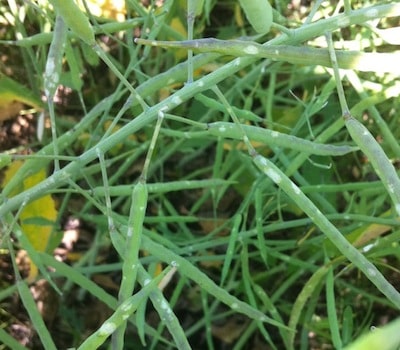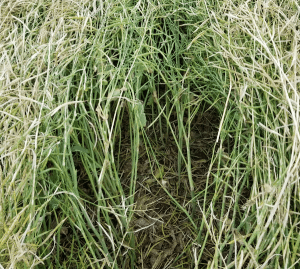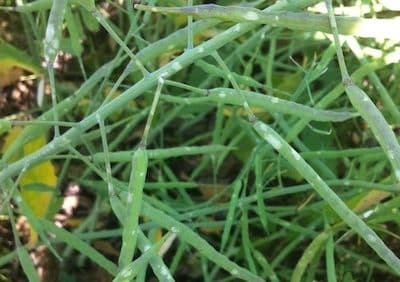Late season hail can damage pods and increase the shattering risk for those pods. Before jumping the gun and swathing too early, take these decision-making steps:
1. Assess where most of the crop yield will come from. If most of the yield will come from undamaged pods lower in the canopy, swathing at 50 to 60+ per cent seed colour change when those pods have reached full size will probably contribute more to yield than swathing early to save hail damaged pods. Note that hail tends to damage top pods more than lower pods, and top pods make a much lower contribution to yield.
2. After hail on podded canola, increase crop walks for the following week to check lower pods. Damage to these lower pods may not be evident immediately after a hail, but bruises can show up after a few days. Seeds either side of a pod bruise will likely dry up, and bruised pods are more likely to shatter prematurely. If lower pods — pods where the yield is — have high levels of damage, then earlier swathing may be warranted.
3. Be prepared to swath quickly if pod bruising is widespread. However, swathing before 20% seed colour change is counterproductive.


Swathing crop that is uneven due to earlier hail: Hail damage can cause crops to mature unevenly. Judging when to swath multi-stage crops can be tricky. If the field has distinct late and early parts, the two parts could be swathed at different times. If not, then make the swath decision based on the stage of those plants that will contribute most to yield.
For example, if some plants are at 60 per cent seed colour change (SCC) on the main stem and other plants are not showing any SCC, growers may want to hold off on swathing. Or if plants are large with many secondary stems, the main stem may be at 60% SCC, but seeds in side branches are still mushy and green. These seeds would wither up and amount to nothing if the crop is swathed at 60% SCC on the main stem.
The decision requires an assessment of the field, and a look at the calendar.
- Check the whole field. If half the plants are ready and half are just beginning seed color change, growers may want to hold off on swathing. By waiting three or four days, there is minimal risk of frost damage for riper parts of the field and a huge potential benefit for later parts if frost doesn’t occur.
- Frost risk is something to consider, although swathing ahead of a frost is not usually a good plan for an immature crop.
- If the field has distinct late and early parts, the two parts could be swathed at different times.
- There is no “perfect” time to swath uneven crops. Choose based on the best time for the majority of plants in the field with the least negative impact on the rest.

